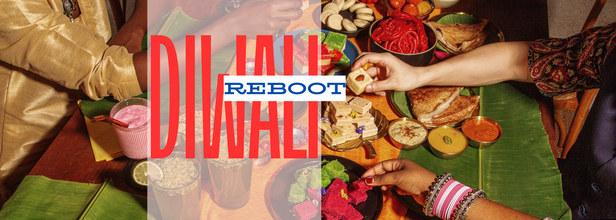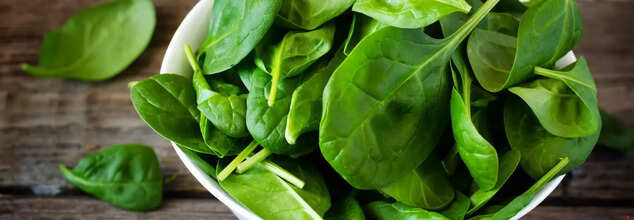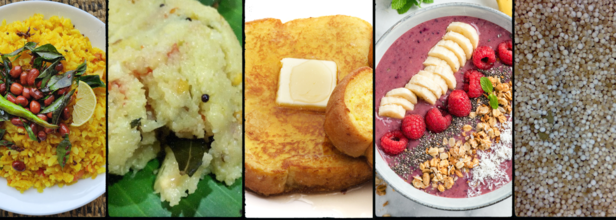
Diwali Detox: Your 3-Step Reboot Plan For A Healthy Festive Season
Diwali Detox: Your 3-Step Reboot Plan For A Healthy Festive Season
As Diwali nears, the excitement and enthusiasm build up with plans for feasting, social gatherings and celebrations. But for many, the weeks leading up to Diwali also bring indulgence in rich sweets, deep-fried snacks and other tempting treats that can make you feel sluggish and bloated. How do you enjoy the festival while keeping your health in check? A detox diet before Diwali can give you a quick energy boost and cleanse your system, helping you feel your best as the festive season unfolds.
Pre-Diwali Diet Tips
Here’s a simple three-step detox plan that can make a difference.
Step 1: Declutter Your Diet
For the next few days, focus on removing processed foods, refined grains and sugary treats from your diet. This includes saying goodbye to quick snacks, pre-packaged foods, and anything high in artificial ingredients. By cutting out sugar, table salt, and processed flour, you’re giving your body a break from additives that contribute to bloating and fatigue.
Avoid: Convenience foods, sugary snacks, table salt, refined flour, white rice and processed baked goods like biscuits, cakes, and pastries. Stay away from sweetened beverages including coffee, tea, and soft drinks.
Step 2: Power Up with Nutrient-Rich Foods
Now, it’s time to introduce your body to foods that fuel and nourish. Opt for sprouted grains, legumes, fresh fruits, and vegetables that are loaded with fiber, vitamins, and minerals. Nuts and seeds, such as almonds, chia, and flaxseeds, offer healthy fats and proteins. Switching to whole grains like barley, oats, and brown rice can support digestive health and keep energy levels steady.
Include: Sprouted grains, legumes, almonds, walnuts, chia seeds, whole grains (like oats and barley), dried fruits, sea salt and natural sweeteners like honey and jaggery. Consider plant-based alternatives for dairy such as soy milk and fresh cheese.
Step 3: Refresh Your Beverage Choices
In the lead-up to Diwali, swap out your regular tea and coffee for herbal teas or green tea without milk and sugar. These teas can provide gentle detoxifying properties, helping your body flush out toxins. Herbal teas like peppermint and chamomile are especially soothing and can improve digestion, a common concern after indulging in festive treats.
Replace: Swap caffeinated drinks with herbal teas or green tea. Avoid alcohol and sugary sodas for a few days to support your liver and digestive system.
Detoxing doesn’t mean you have to miss out on festive foods. Instead, use this time to reset your eating habits and prepare your body for the festivities ahead. With these simple steps, you can enjoy Diwali feeling lighter, healthier and more energized. This plan not only helps flush out toxins but also prepares your body to handle the holiday treats with a balanced approach.
When Diwali arrives, you’ll be ready to indulge mindfully, knowing that you’ve given your body the prep it deserves.

Credit: Canva
Can Munching On Raw Spinach Curb Snacking?
A new TikTok trend has people stuffing raw spinach leaves into their mouths and eating them in large quantities, with some users claiming that consuming spinach first thing in the morning can curb cravings for salty and sugary foods throughout the day. While spinach is undeniably nutritious and may help manage hunger, health experts caution that there is no scientific proof supporting that eating this vegetable can retrain taste buds.
Spinach is rich in vitamins, minerals and antioxidants. It also provides fiber, which may promote satiety and reduce between-meal cravings. Moreover, there is empirical evidence that eating vegetables and proteins before carbohydrates—a practice known as meal sequencing—can help lower blood sugar spikes, which may, in turn, reduce sugar and carb cravings. One recent review of 11 studies found that individuals who ate carbohydrates at the end of their meals had lower blood sugar levels.
However, despite its many benefits, there is no scientific evidence to show that spinach retains taste buds. Still, the trend has encouraged people to eat more spinach, which health experts say is a good practice. That said, consuming spinach in excess isn’t without risk. Although there is no official consensus on how much is too much, the U.S. Department of Agriculture defines a serving as 2 cups of raw spinach or 1 cup of cooked spinach.
Spinach contains high levels of vitamin K, which may interfere with certain blood-thinning medications. It’s also rich in oxalates—compounds that can bind to calcium and potentially worsen kidney stones in susceptible individuals. Cooking spinach can help reduce its oxalate content, research shows.
In terms of nutritional value, raw spinach offers more lutein and vitamin C, while cooking increases the bioavailability of nutrients like vitamin A, beta carotene, thiamin, riboflavin, magnesium, and calcium. Nutrient content can also vary depending on soil quality, storage duration, cooking method, and time, said registered dietitian Theresa Gentile, spokeswoman for the Academy of Nutrition and Dietetics.
If you’re not a fan of spinach, there's no need to force it down, experts noted. Gentile suggests trying baby spinach, which has a milder, sweeter taste. Alternatively, other dark leafy greens like kale, arugula, cabbage, collard greens, escarole, mustard greens, romaine, Swiss chard, turnip greens, and watercress can be just as nutritious.
Adding spinach or other greens to breakfast or blending them into smoothies is a great start, but one mouthful won’t meet the daily recommended intake of 2 to 4 cups. Experts recommend incorporating a variety of vegetables, including colorful peppers and cruciferous options like broccoli, cauliflower, and Brussels sprouts.

Credits: Canva
These 5 Popular Indian Breakfasts Are Slowing Down Your Health Goals
When you wake up in the morning and are getting ready for your work, the first thing you do after you freshen yourself is to grab a quick breakfast. The key to breakfast is that it has to be quick, and to make that happen we often compromise on its health benefits. As Indians, some of the common things we eat the first thing in the morning may look like they are healthy, but in reality they are not.
Nutritionist and health coach Nidhi Nigam, who goes by @nutrify.with.nidhi on Instagram with 10.5k followers posted a reel about the top 5 breakfast that we think are healthy but can actually do a lot worse to our health than we think.
Let's delve deeper into it!
Poha
It is easy to make and with the instant Poha packets, it takes even less time to prepare. But the real question is, should you really have poha for breakfast? Nidhi says not. It is high in carbs and low in protein, moreover, it lacks fiber. It is not healthy at all. In fact experts have also revealed that it is just pure rice and could spike in blood sugar levels.
While we might think it is healthy, turns out it is not. Since it is made with rice flakes, it is pure carbohydrates and when it breaks down in your body, it turns into pure sugar.
Upma
Nidhi mentions that Upma is actually mostly refined semolina or suji with very little nutrition. Dr Siddhant Bhargava, who also shares health advice on his Instagram account also believes that Upma is not a great way to suffice your breakfast need. He says that after 8 hours of sleep, your cells degenerate and they require protein to repair them. However, when you eat Poha, all you are giving your body is pure carbs.
Some of the side effects of semolina also includes abdominal pain, constipation, and bloating.
Sabudana
This is our grandma's favorite. We all grew up eating or at least seeing our grandparents eat sabudana the first thing in the morning. But is it really healthy? Nidhi says no. She notes that it contains pure starch with almost zero protein or fiber.
Experts say that it is like a bomb that can spike your blood sugar. If you are fasting it may make sense to eat a carbohydrate bomb like that. However, on a day-to-day basis, it is a no go. Furthermore, it is also a highly ultra-processed starch.
It is a highly refined form of starch which is obtained from the roots of Cassava or Sago plant. Due to its refinement it gets absorbed in blood rapidly and spikes the blood sugar significantly. It also has a high glycemic index, and can cause issues for people with diabetes, or metabolic health issues.
Smoothie Bowl
Nidhi notes that a smoothie bowl is nothing but a meal packed with sugar, which can cause instant sugar spikes. While fruits are great for you, what you need is whole food and not smoothies. Smoothies are already broken down, which means when you consume it, you consume way too many carbohydrates at one time. This can raise blood sugar levels all at once. It can also lead to an excess in overall calorie intake and promote weight gain.
Bread And Butter
While this is a classic, go-to breakfast option, it is better if you start to reconsider this too. Nidhi mentions that it is an ultra-processed carbs with unhealthy fats. Furthermore, butter can also add excessive sodium and fat to your diet.

Credit: Canva
15 Staple Foods To Make Healthy Eating Easy All Week Long
Many people love to beat the meal-planning drum. I would know; I am one of them! And while it is true that making your diet chart in advance can help you eat healthier in the real world, pre-planning your family's food is not always realistic. So how to do it? The answer is simple—fill your pantry and fridge with the right and essential food items. This way, creating wholesome meals becomes much easier.
Here Is What You Should Store In Your Fridge To Make Nutritious Dishes At Your Comfort
Canned Chickpeas
A can of chickpeas opens the door to countless dishes. Add them to soups or stews for an easy boost of protein and fiber, or mash them with lemon, dill, and celery to fill wraps. Think chickpea cakes, tacos, and hearty salads. Store leftovers in a sealed container in the fridge for up to a week, or freeze them after drying for longer storage. One cup offers 12.5g fiber, 14.5g protein, and important nutrients like manganese and folate.
Chicken Breast
As one of the most widely available meats, chicken breast is a go-to for stir-fries, sandwiches, pastas, and more. Pair it with a whole grain and a veggie for an easy dinner. Enhance the flavor with pantry herbs like rosemary or garlic powder. Raw chicken freezes well in individual foil packets, while cooked chicken lasts up to 9 months in the freezer. Its high-quality protein supports muscle growth, immunity, and healing.
Smoked Salmon
Already cooked and packed with omega-3s, smoked salmon is perfect for wraps, pastas, or salads. It pairs well with lemon, dill, and even cream cheese. Leftovers can be refrigerated for a week or frozen for a month. Just watch out for its high sodium content — around 600-1,200 mg per 100g.
Extra-Firm Tofu
Pressing tofu helps it crisp up nicely in stir-fries and noodle dishes. Its mild flavor makes it a great canvas for sauces and spices. Keep it in the fridge for 5–7 days or freeze for 4–6 months. With 17g of protein per 3.5 ounces and over 50% of the DV for calcium, tofu is also linked to a lower risk of hormone-related cancers.
Red Lentils
With a cooking time of 20–25 minutes, red lentils shine in dishes like daal. Their earthy flavor is mild and slightly sweet. Once cooked, they can be stored for up to 7 days and used in salads or with sautéed greens. Dried lentils pack an impressive 46g of protein per cup and are great for heart health.
Whole Wheat Spaghetti & Quinoa
Whole wheat spaghetti and quinoa serve as solid meal bases. Spaghetti is fiber-rich, aids digestion, and pairs well with Mediterranean ingredients. Quinoa, a protein-rich grain, is easy to prepare and contains anti-inflammatory flavonoids and key minerals.
Quick Oats & Bone Broth
Quick-cooking oats make for customizable, heart-friendly breakfasts, while bone broth adds collagen, glucosamine, and chondroitin to soups and sauces. Store bone broth in ice cube trays for easy use.
Sweet Potatoes & Frozen Spinach
Sweet potatoes are versatile and potassium-rich, while frozen spinach is great in quiches, smoothies, and pastas, offering iron and antioxidants for eye health.
Grape Tomatoes, EVOO, Onions & Apples
Roast grape tomatoes for deeper flavor, sauté onions for savory bases, and use extra-virgin olive oil for its heart-healthy MUFAs. Apples offer fiber, antioxidants, and a long shelf life.
© 2024 Bennett, Coleman & Company Limited

